Fluid Dynamics
My cat shows a particular interest in drinking water. She approaches the gravity-fed water bowl, and walks a quarter of the way around. She stops and looks up, sweeps the room with her eyes. She looks down at the water. This ritual might be repeated a few times, especially if the water bowl is filling (she is fascinated by moving water). Finally she sits down. She looks around the room again. Then she settles all the way down on her haunches and gets her nose down near the water, as if searching for the optimum place on the surface to connect her tongue to the water. Once that sweet spot is found, she settles in, her whole focus on what she is about to do.
She drinks, motionless except for her tongue and the water.
Maybe as a cat she has always known how water comes into her mouth, a process that scientists have only just discovered. An article in the December 4, 2010 of Science News reports on a recent discovery by a group of scientists who studied the way cats drink water.
Cats do not drink water the way dogs do. Dogs form their tongue into a forward-facing little cup and then ladle the liquid into their mouth. Cats form their tongue into a backward facing J-shape and touch the water and pull back into their mouth very quickly - at speeds up to 78 centimeters per second or 3.5 sips per second. The water "adheres to the tip of the tongue and rises in a column as the tip retracts. Just before gravity can overcome the rising liquid's inertia and collapse the column in a splash, the cat catches the top portion of the liquid column in its mouth."
Now I think this is just too cool.
The authors of the study ascribe "elegance and complexity" to the way cats drink. "Cats are much more sophisticated [than dogs] in the knowledge of fluid dynamics." I tend to agree.
So is my cat entranced with her feat of fluid dynamics, each time she drinks? Or maybe her elaborate ritual involves looking around to see if one of our dogs is watching: "Watch this, you clumsy dog!"
Probably she is just thirsty and a bit quirky. But it's fun to imagine.
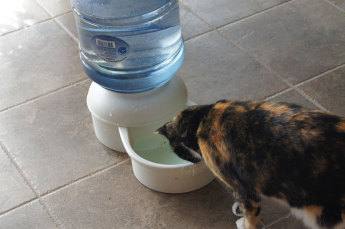
Click below for the long series of photos of Tori at the water dish.
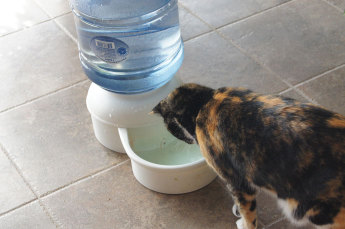
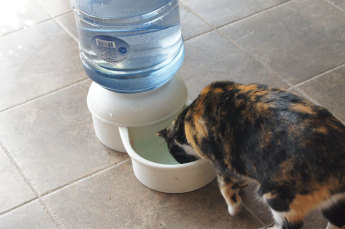
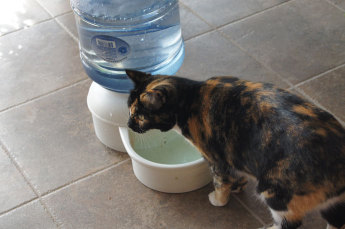
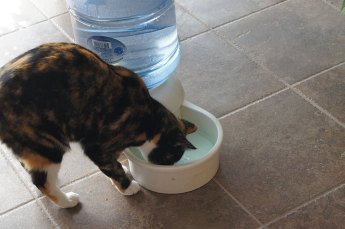
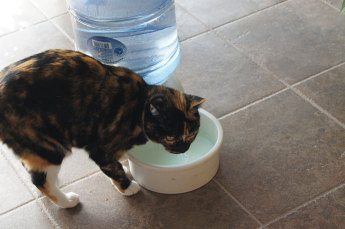
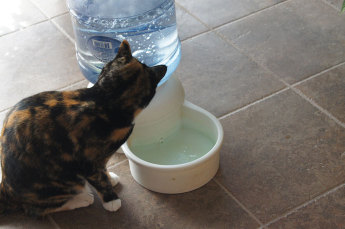
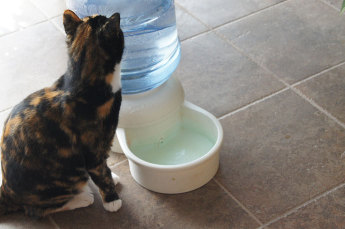
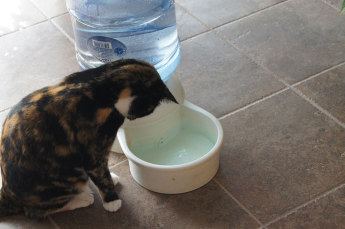
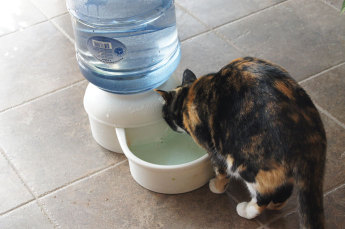
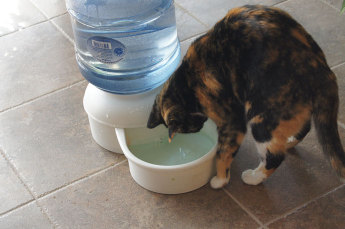
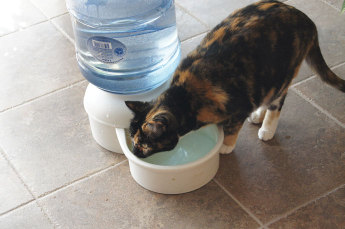
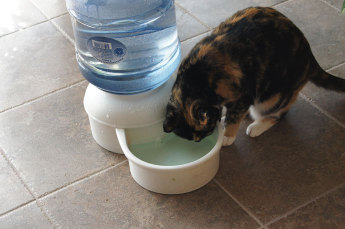
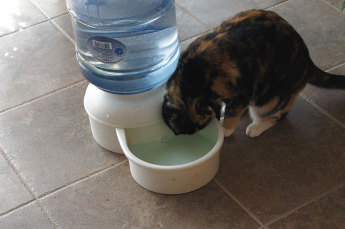
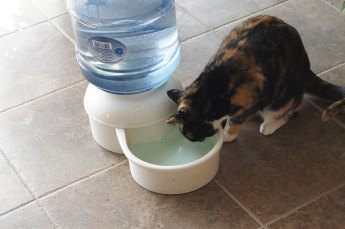
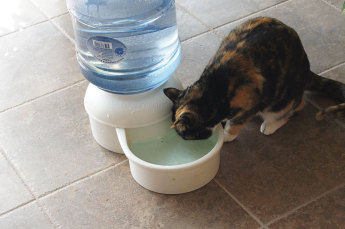
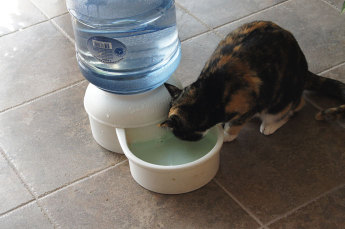
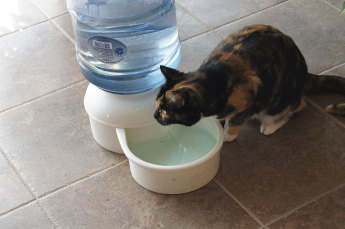
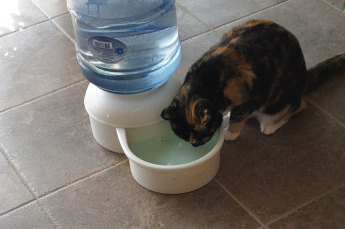
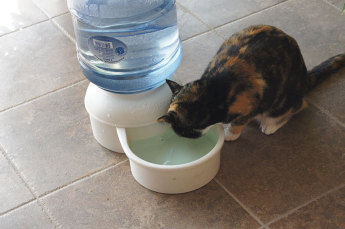
(I have 10 more identical images as the one above that I didn't post)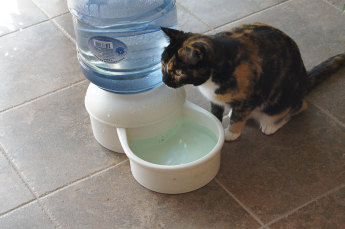
References:
Cats drink using lap-and-gulp trick, Imbibing a delicate interplay between inertia and gravity. By Susan Milius in Science News. December 4th, 2010; Vol.178 #12 (p. 5).
Science 12 November 2010: Vol. 330 no. 6006 p. 901
www.sciencemag.org
She drinks, motionless except for her tongue and the water.
Maybe as a cat she has always known how water comes into her mouth, a process that scientists have only just discovered. An article in the December 4, 2010 of Science News reports on a recent discovery by a group of scientists who studied the way cats drink water.
Cats do not drink water the way dogs do. Dogs form their tongue into a forward-facing little cup and then ladle the liquid into their mouth. Cats form their tongue into a backward facing J-shape and touch the water and pull back into their mouth very quickly - at speeds up to 78 centimeters per second or 3.5 sips per second. The water "adheres to the tip of the tongue and rises in a column as the tip retracts. Just before gravity can overcome the rising liquid's inertia and collapse the column in a splash, the cat catches the top portion of the liquid column in its mouth."
Now I think this is just too cool.
The authors of the study ascribe "elegance and complexity" to the way cats drink. "Cats are much more sophisticated [than dogs] in the knowledge of fluid dynamics." I tend to agree.
So is my cat entranced with her feat of fluid dynamics, each time she drinks? Or maybe her elaborate ritual involves looking around to see if one of our dogs is watching: "Watch this, you clumsy dog!"
Probably she is just thirsty and a bit quirky. But it's fun to imagine.

Click below for the long series of photos of Tori at the water dish.



















(I have 10 more identical images as the one above that I didn't post)

References:
Cats drink using lap-and-gulp trick, Imbibing a delicate interplay between inertia and gravity. By Susan Milius in Science News. December 4th, 2010; Vol.178 #12 (p. 5).
Science 12 November 2010: Vol. 330 no. 6006 p. 901
www.sciencemag.org
Comments
No comments yet
Add Comment